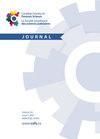法医认识论:探索法医科学的个案研究
IF 0.5
Q4 MEDICINE, LEGAL
Canadian Society of Forensic Science Journal
Pub Date : 2020-01-02
DOI:10.1080/00085030.2020.1736811
引用次数: 1
摘要
摘要:我们对法医认识论的调查探讨了在三种模式解释学科中使用数据类型进行具体案例研究。它还考察了执业案例实验在法医学中的认识论地位。我们从不同的模式解释学科发展了三个案例:摩擦脊分析;血迹模式分析;还有鞋印分析。对于每种情况,使用三种不同的数据类型推导了一系列实验:定量方法(使用数字数据),定性方法(使用图像数据)和混合方法(同时使用数字和图像数据)。我们提供的数据分析对于任何学术研究者来说都是常识。为每个案件和研究方法编制电子文件,并由Qualtrics Software转发给规定学科内的法医执业人员。关于从业者教育水平和从业经验的人口统计问题包括在调查中,以及开放式评论区。因变量是参与者根据所使用的数据类型提供意见的信心百分比。方差分析表明,从业者更有信心使用混合方法的数据方法。在百分比置信水平和学科类型之间没有发现差异。同样,信心水平与工作年限或受教育程度之间也没有显著差异。定性数据分析验证了定量结果,因为从业者对混合方法研究方法更有信心。本文章由计算机程序翻译,如有差异,请以英文原文为准。
Forensic epistemology: exploring case-specific research in forensic science
Abstract Our inquiry into forensic epistemology explores the use of data types for case-specific research within three pattern interpretation disciplines. It also examines the epistemic status of practitioner case experimentation in forensic science. We developed three cases from different pattern-interpretation disciplines: a friction ridge analysis; a bloodstain pattern analysis; and a footwear impression analysis. For each case, a series of experiments were derived using three different data types: a quantitative approach (using numeric data), a qualitative approach (using image data) and a mixed-method approach (using both numeric and image data). We supplied data analyses that would be common knowledge for any academic researcher. Electronic files were compiled for each case and research method and forwarded by Qualtrics Software to forensic practitioners within the prescribed discipline. Demographic questions on practitioner education level and years of experience were included in the survey, along with open-ended comment areas. The dependent variable is the participants’ percentage confidence in providing an opinion from the data type used. ANOVA analyses indicated that the practitioners were more confident using a mixed-method data approach. No differences were found between the percentage confidence levels and discipline type. Similarly, there was no significant difference between the confidence levels and years of experience or the participants’ education level. The qualitative data analysis validated the quantitative results in that the practitioners were more confident with a mixed-method research approach.
求助全文
通过发布文献求助,成功后即可免费获取论文全文。
去求助

 求助内容:
求助内容: 应助结果提醒方式:
应助结果提醒方式:


